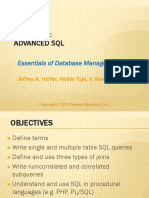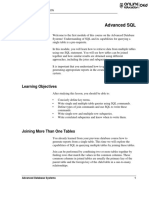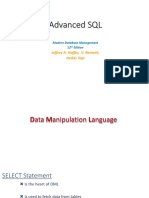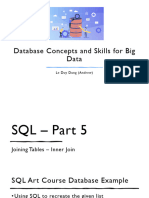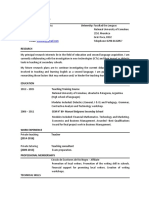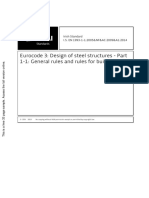0% found this document useful (0 votes)
54 views32 pagesLecture6 sql3 v2 PDF
This lecture covers advanced SQL topics including joins and subqueries. It discusses equi-joins, natural joins, and outer joins. It provides examples of each type of join using tables from a sample database for a furniture company. It also covers noncorrelated and correlated subqueries, discussing how they are used in WHERE and HAVING clauses as well as in the FROM clause. Examples demonstrate how to retrieve related data across multiple tables using joins and subqueries.
Uploaded by
Marin MagreCopyright
© © All Rights Reserved
We take content rights seriously. If you suspect this is your content, claim it here.
Available Formats
Download as PDF, TXT or read online on Scribd
0% found this document useful (0 votes)
54 views32 pagesLecture6 sql3 v2 PDF
This lecture covers advanced SQL topics including joins and subqueries. It discusses equi-joins, natural joins, and outer joins. It provides examples of each type of join using tables from a sample database for a furniture company. It also covers noncorrelated and correlated subqueries, discussing how they are used in WHERE and HAVING clauses as well as in the FROM clause. Examples demonstrate how to retrieve related data across multiple tables using joins and subqueries.
Uploaded by
Marin MagreCopyright
© © All Rights Reserved
We take content rights seriously. If you suspect this is your content, claim it here.
Available Formats
Download as PDF, TXT or read online on Scribd
/ 32




